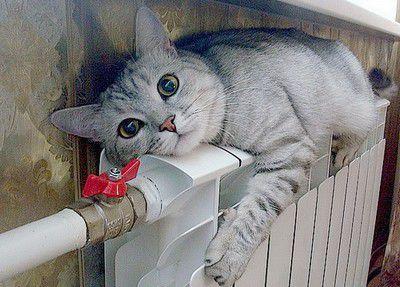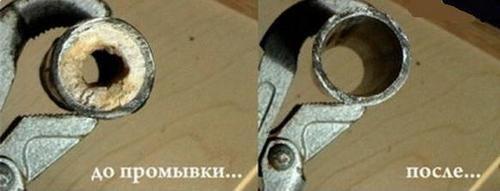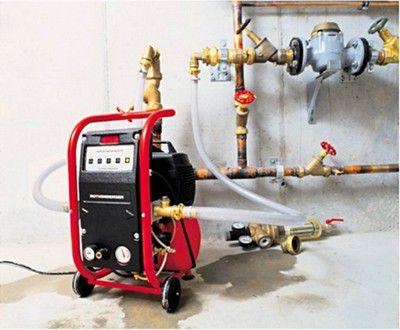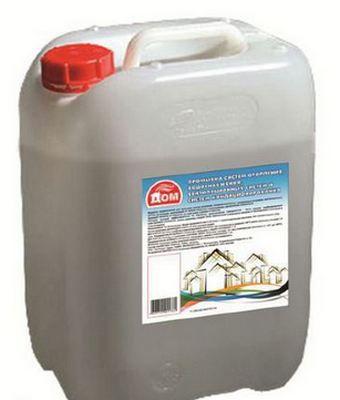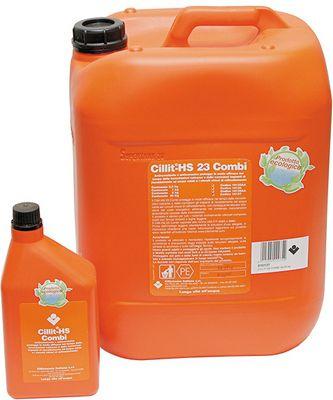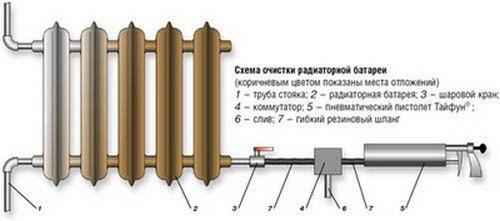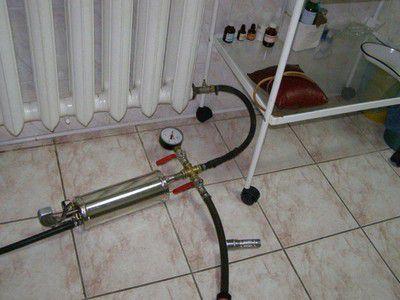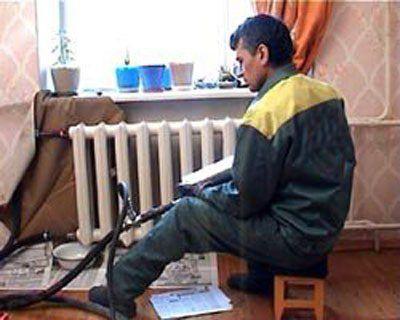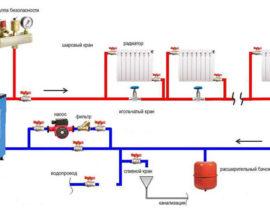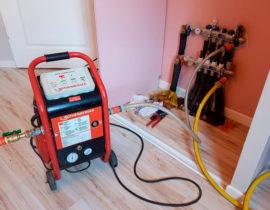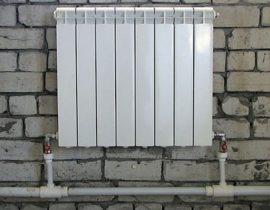A very significant point in the operation of the heating system is her trouble-free operation for many years.
At her design lays the foundation for meeting this requirement, but regular maintenance also plays an important role in longevity. her work. Includedcs prpreventive measures to maintain the efficiency of the heating system in a residential building include its periodic flushing, as well as crimping — these processes will significantly extend the trouble-free service life.
Content
The importance of flushing the heating system
Over time, deposits are formed in the internal cavities of pipes and heating radiators, consisting of sand, dirt, rust, scale and salts. They not only have a detrimental effect on the materials from which the elements of the system are made, but also weaken the pressure of the passage of the coolant. In addition, at one moment a pipe or radiator may burst, and this threatens those what the apartment will be flooded with hot dirty water, things and furniture will be damaged, maybe and then what she is will spill to the neighbors below, and then compensation or repair is indispensable.
Even if you don't take calculation the likelihood of such a "man-made disaster", overgrowth of pipes and radiators entails a lot of negative consequences:
- Due to education layers dirt inside the batteries reduces the mechanical strength of all elements of the system.
- The friction of the coolant against the inner walls of pipes and batteries increases, and this reduces the rate of water flow.
- Due to an increase in wall thickness and a decrease in internal diameter, heat transfer from radiators and pipes decreases. Also there is a decrease in the temperature of the coolant for check thermal resistance.
- Scale build-up in the system increases fuel consumption for heating and meansand utility costs are on the rise.
To free the internal surfaces of the system from layers, it is carried out her preventive maintenance. This can be done in different ways.
- The first way is to improve the quality of the coolant, which is quite feasible to implement in an autonomous heating system, and is almost impossible — in the central.
- The second way is crimping and washing, which are carried out regularly. Carry out preventive cleaning of pipes, boiler and radiators — quite an affordable procedure when it is difficult to improve the quality of the coolant.
Preparatory work
The movement of water through the system and the intensity of heating of the premises are mainly influenced by pressure. It depends on the height of the building. — pressure in a multi-storey building should be stronger. In a central heating system, pressure surges are not uncommon, and if pipes become clogged with deposits, they can burst.
Before starting work on crimping heating system, conduct appropriate training.
First thing goes full osmotr sunex nodes and connections.
If necessary, replace the stuffing box seals to ensure the tightness of the system.
If necessary — restore thermal insulation pipeline.
Further the room (riser) is disconnected from the central heating system at the inlet and outlet.
Crimping
The entrance to the circuit is blocked, the remaining German dirty water is drained.
The system is connected to a tap water source and slowly filled. During the filling process, the liquid displaces air from the batteries and pipes — it must be lowered several times by opening a special tap. To detect water losses in the system of a house with multiple apartments, it is necessary to release air at maximum pressure. Crimping carried out with special equipment — pumps. If the pressure drops at the same time, then there are leaks and leaks. Most often, such system losses occur at connecting nodes. Such areas should be identified and reliably seal. To do this, you need to divert water again and repair damaged areas - replace seals, check the quality of threaded connections or fittings. Perhaps this procedure have to repeat several times until the pressure is fully stabilized.
Flushing the system
This procedure is carried out using three different technologies, each of which has pluses and minuses. We will describe each in great detail:
Hydropneumatic cleaning
This type of cleaning has been used for a long time and shows positive results, if performed correctly.Such a cleaning is quite simple and consists in the following. A hose is connected to the system circuit and water is discharged into the sewer under strong pressure, which creates powerful pneumatic compressor. This procedure is performed first in one direction, those. through return lineand then vice versa. emulsified a mixture of air and water, passing through the circuit, destroys the accumulated layers of deposits and brings them out.
For cleaning, close the tap on return line, and to measuring valve connect the compressor and open the reset on the return line. After reaching the required pressure level in the compressor receiver, you need to open the valve to which it was connected. Rinsing should be continued until the water will go clean.
Further washing is carried out in the opposite direction. To do this, the discharge and the valve to which the compressor apparatus is connected are closed. Then the supply valve is closed and opened for return line and a dump valve. The compressor is connected to the metering valve for return line. Further everything is done same way, how described above.
This process is especially effective for washing cast iron batteries and other technological applications. tricks won't give better results.
Chemical flush
Most often, a technology is used to clean heating systems using chemicals, with the help of which all deposits are partially dissolved, exfoliated and removed. Chemical reagents may have a different composition, which includes various acids, alkalis, complexing agents or solvents.They are quite toxic, so working with them requires accuracy and caution.
The process will require hoses, a pump and a reservoir. Means selected depending on the material from which the pipeline is made. This method is more suitable for a stand-alone system, since an apartment building will need a large volume cleansing agent, but sometimes it after all they are also used for large buildings, for example, if the heating has been working for a long time without prevention, and has lost its effectiveness due to overgrowth of pipes. The cleaning process takes two three days, with the system running.
Not always the use of chemicals is effective for cleaning non-galvanized pipes, as over time they are corroded from the inside and overgrown with deposits. When they are chemically cleaned, new affected places with leaks.
Most of the dirt settles on the lower parts of pipes, radiators, heat exchangers of furnaces or boilers. For local cleaning, a cleaning agent is poured into the circuit instead of water, and with the help of a pump it is pumped through the entire heating system. Then the flushing liquid is drained, then repeated crimping, and after her pipes are filled with water and put into operation.
It must be remembered that the cleaning agent after use must not be drained into the sewer. If there is no other option, then together with the disposal of these mediatv dlI'm defusing them poured neutralizing solutions.
For aluminum batteries, washing consisting of alkaline and acid solutions is not suitable. — they just ruin them.
Video sketch about the possibilities of chemical flushing of heating
Pneumohydropulse cleaning
With this method of washing and cleaning, an air gun is used. It can be used for elements of the heating system, the diameter of which is less than one and a half centimeters. With the help of this tool clean individual nodes and elements, as well as complex sections of the pipeline. This method is very effective, and the cleaning process is quite fast, and it does not require shutdown at home from frombraiding.
The impulses supplied by the pneumatic tool to the pipe have certain pressure, and the speed of their propagation can be 1300 m per second. This is enough to remove all accumulated deposits from the inner walls of the pipes. The resulting kinetic wave passing through the water easily removes all growths from the inner walls of the radiators and brings them out from the system.
Such cleaning is available only to specialists who know all the parameters of the system, which must be taken into account so as not to cause damage and breaks.
Radiator cleaning
Sometimes it is required to clean one of the main elements of the system - the radiator. It's immediately noticeable becausethat it does not warm up to the required temperature, compared to neighboring batteries. To do this, you need to perform a number of activities that are carried out before the heating season.
- To begin with, the coolant is drained from the system and the radiator is dismantled.
- Battery flushing can be done at home by installing her to the bath. Pre her you need to cover it with a thick layer of fabric or old things, which you can then simply throw away. This is necessary in order not to spoil the enamel coating of the bath.
- All plugs are removed from the battery. Do not forget to install a mesh on the drain hole to make it easier to collect exfoliated deposits coming out of the radiator.
- A watering can is removed from the shower hose, and water is directed from it inside batteries at maximum pressure. The radiator is sometimes turned in order to drain all the water with deposits.
- In addition to the water jet, you can add a piece of reinforcement, which will help clean off large growths of layers.
- If it is possible to hold this event on the street, then it is better to do it with a long hose that may be pushed into any place deep into the battery.
- When water from the battery will start flow clear and clean, her can be installed back.
- After installing the radiator and installing all its parts on the seals, it would be useful to carry out a control crimping. Only now the work will be considered completed and it is possible to fill the system with water.
When it's time to clean the heating system or her individual elements, correctly assess your strengths. It may be better to call a specialist who will quickly cope with this task and complete her knowingly, rather than risk your property or the property of your neighbors. If the system is assembled incorrectly after cleaning, you can get more than one leak, which will be difficult to quickly repair.

